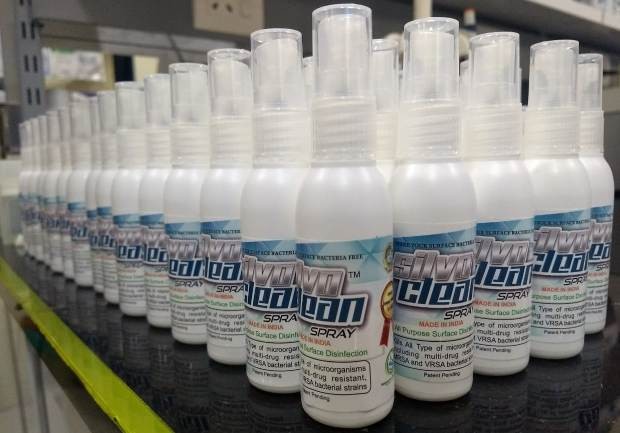Play all audios:
An Indian start-up has made a non-alcoholic colloidal silver solution that can be used to disinfect hands and surfaces where the novel coronavirus may survive from hours to days. Free of
harmful chemicals, this non-inflammable liquid is an effective sanitiser that can prevent the spread of the infection through contact – the prime mode transmission of the virus. Pune-based
start-up Weinnovate Biosolutions developed the solution containing silver nanoparticles, known to prevent the synthesis of viral RNA molecules. The nanoparticles can, therefore, stem viral
budding. “We are aiming to manufacture a minimum of 200 litres of the solution every day to cater to the heightened demand of hand sanitisation and disinfection,” Milind Choudhari, one of
the founders of Weinnovate Biosolutions, said. The market-ready solution would be priced between Rs 100 and Rs 150 for a 200 ml bottle, he said. Silver nanoparticles have been effective
against other viruses such as HIV, hepatitis B, herpes simplex and influenza. Silver nanoparticle-based materials have the potential to prevent contact infection to healthcare workers 1 .
The project was supported by India’s Department of Science and Technology (DST) and Department of Biotechnology (DBT). DST secretary Ashutosh Sharma says nanoparticles are rapidly emerging
as effective solutions to a variety of issues related to COVID-19, from therapy to disinfection to imaging. “The relevance of nanoparticles is owing to their size (less than 100 nm), which
is comparable to that of COVID-19 virus, and a plethora of functionalities such as targeting and drug delivery that can be tailored,” Sharma said. _[Nature India's latest coverage on
the novel coronavirus and COVID-19 pandemic_ _here_ _. More updates on the global crisis_ _here_ _.]_ REFERENCES 1. Nakamura, S. et al. Synthesis and application of silver nanoparticles (Ag
NPs) for the prevention of infection in healthcare workers. Int. J. Mol. Sci. 20, 3620 (2019)

